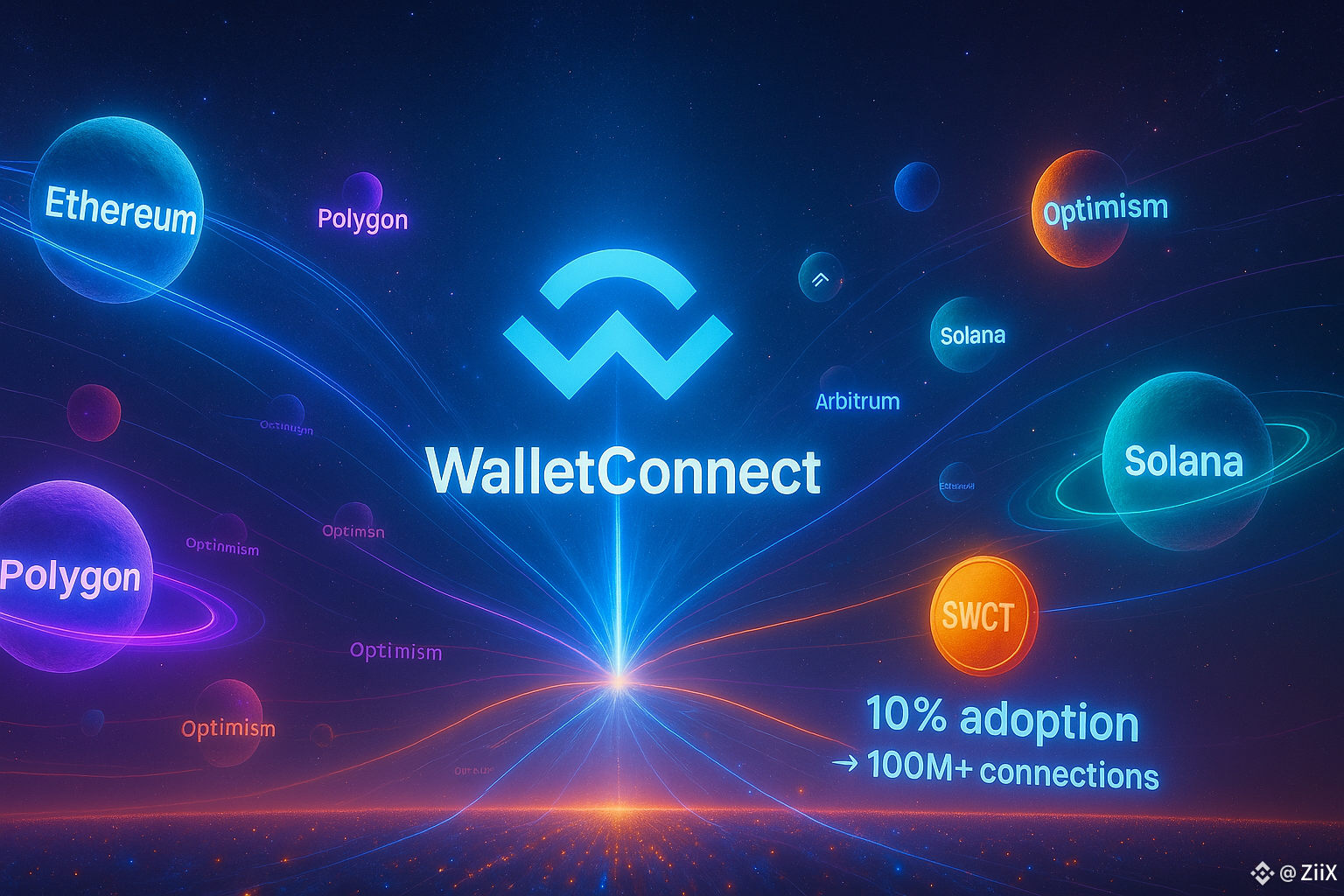In the rapidly evolving world of blockchain, one of the biggest challenges has always been fragmentation. Different wallets, multiple chains, and countless decentralized applications (dApps) often create friction for users. For many, this complexity is what holds Web3 back from mass adoption. This is where WalletConnect has stepped in—not just as a technical solution, but as the universal language that bridges the gap between wallets, apps, and chains.

The Problem of Fragmentation in Web3
Blockchain technology was designed to give users ownership of their assets and identities. But with freedom came complexity. Ethereum wallets couldn’t easily talk to Solana apps, Cosmos tools weren’t compatible with Ethereum dApps, and new users often had to juggle multiple platforms just to get a simple task done. This created a confusing experience and raised the barrier to entry for mainstream adoption.
For Web3 to succeed, there needed to be a common layer—a universal language that could connect everything together.
WalletConnect as the Universal Translator
WalletConnect has positioned itself as that universal language. At its core, WalletConnect is an open-source protocol that enables secure connections between wallets and decentralized applications across different blockchains. Instead of being locked into one ecosystem, users can simply scan a QR code or click a link and connect their wallet to almost any dApp instantly.
This level of interoperability is powerful because it eliminates the need for constant switching. Whether you’re trading tokens on Ethereum, exploring DeFi on Polygon, or experimenting with NFTs on other chains, WalletConnect acts as the common thread tying all of these experiences together.
Security Without Compromise
One of the most impressive aspects of WalletConnect is how it manages to simplify user experience without compromising security. Connections are end-to-end encrypted, meaning that sensitive information like private keys never leaves the user’s device. Instead, WalletConnect serves as a secure channel that transmits interaction requests, allowing users to approve or reject them in their own wallets.
This security model is critical because it preserves one of the core values of Web3: trustless interaction. Unlike traditional logins that rely on centralized servers, WalletConnect keeps users in control at all times.
Driving Web3 Adoption
WalletConnect’s role as a universal connector has broader implications for the adoption of decentralized technology. Developers no longer need to build custom wallet integrations for every new app. Users don’t need to worry about whether their wallet will work with a certain chain. By reducing friction on both sides, WalletConnect lowers the entry barrier for millions of potential Web3 users.
As Web3 expands, with new chains and use cases emerging every day, the demand for a chain-agnostic UX layer will only grow. @WalletConnect is not just keeping pace—it’s setting the standard.
Conclusion
Web3 will only achieve its full potential when it becomes simple, accessible, and universal. #WalletConnect has become the common language that makes this possible. By bridging apps, wallets, and chains, it ensures that decentralized ownership and interaction are not just ideals, but practical realities for everyday users. In a world where blockchain often feels fragmented, WalletConnect is the invisible translator making everything work together.

